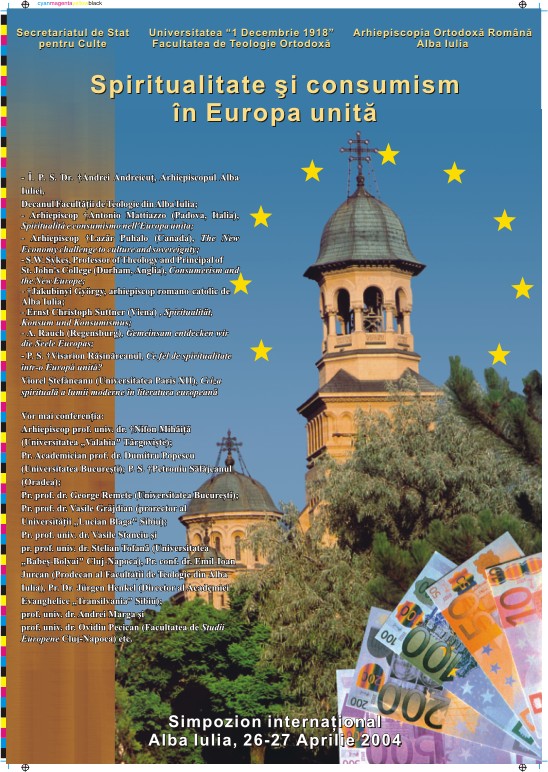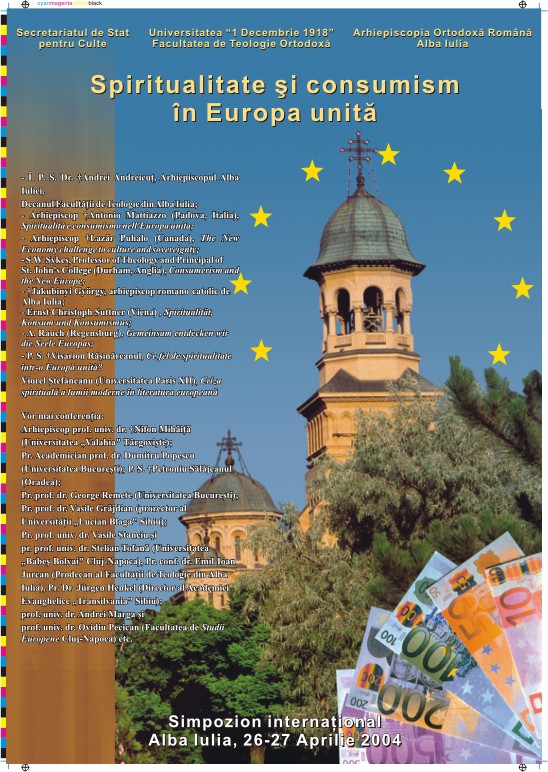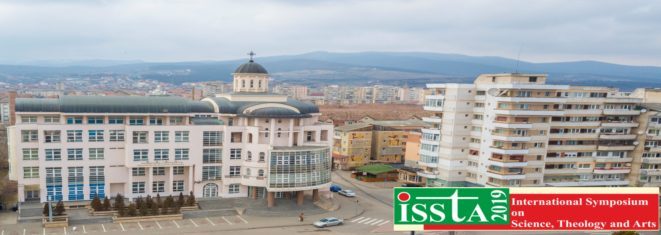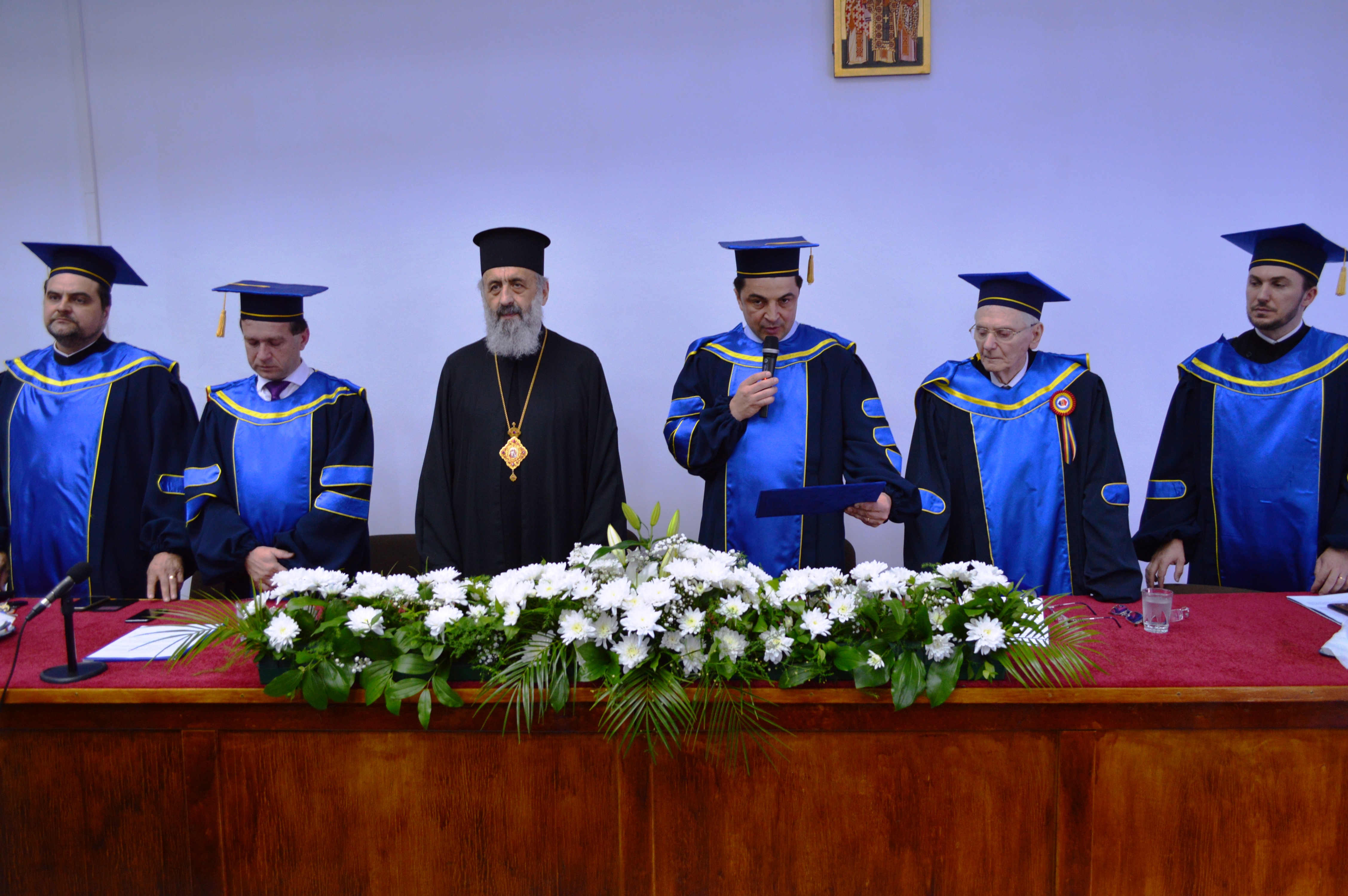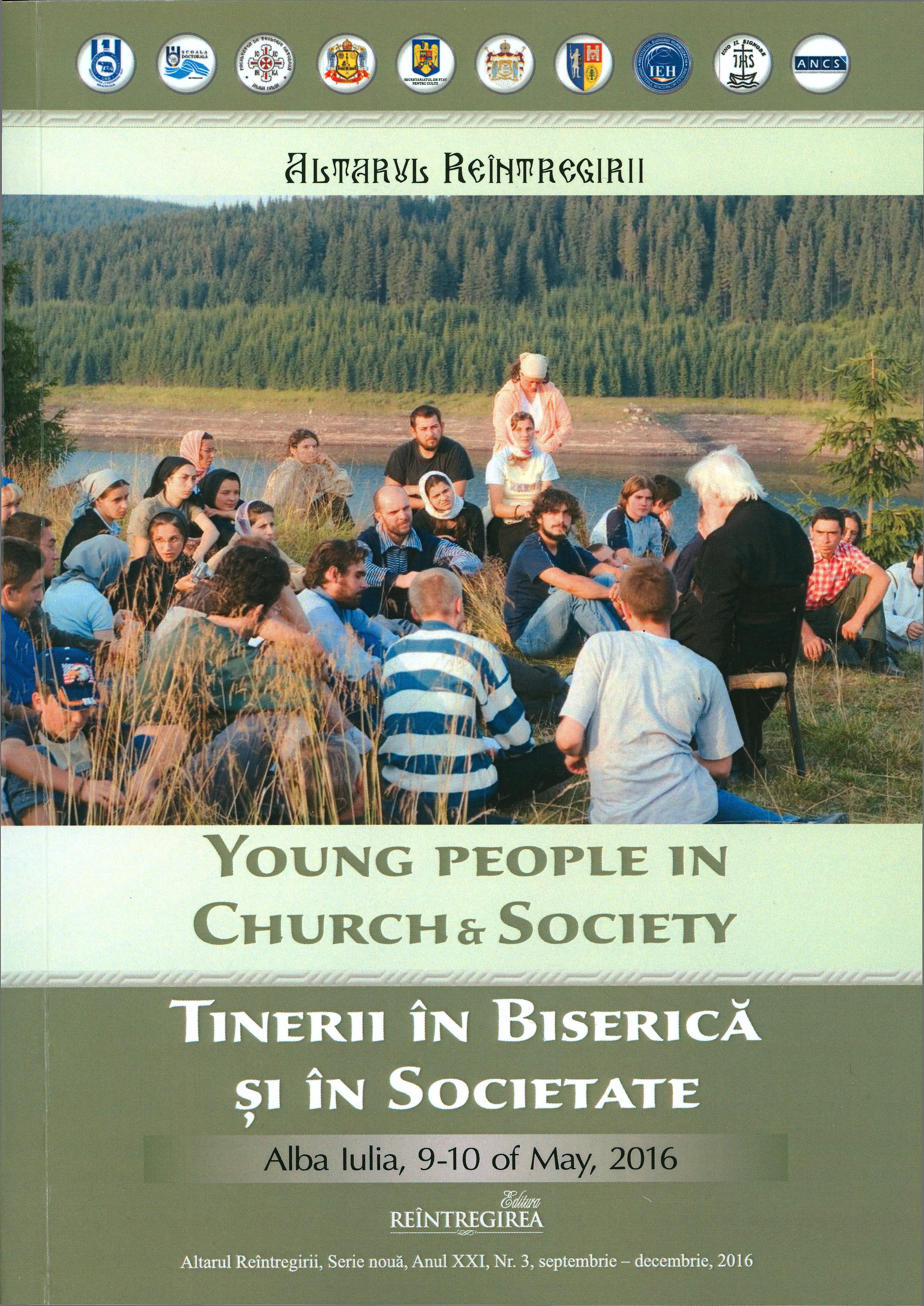CULTURE AND RURAL SPIRITUALITY: CONVERTING, TRANSFORMING, ADAPTING
To some people there seems to be almost no difference any more between rural and urban areas. The internet seems to have levelled everything. And yet, we believe that, in order to restore true spirituality, in its concrete forms, we need to return to the rural spirituality. It is this spirituality which created the village culture, and not the other way round. Village culture and spirituality used to live in perfect sinergy.
This panel aims to look at:
– the village as a topos of sacred culture;
– the villager in his Christian sapiential tradition;
– the Christian tradition in village traditions – a lived doctrine;
– landmarks of a model for redeeming the European identity at the beginning of the 3rd millenium;
– the rural topos between the sacred and the profane;
– the village as an axis mundi of the interaction between God and man;
– the debasement of the village through multimedia systems at the beginning of this millenium, and the need to restore its Christian axiology;
Obviously, there may be other topics which the research of this panel may follow. We believe there are many things to be said in respect to rural theology or to the Christian sapiential tradition of the village.
CULTURA ŞI SPIRITUALITATEA RURALĂ: CONVERTIRI, TRANSFORMĂRI, ADAPTĂRI
Pentru unii, aproape că nu mai există nicio deosebire între spațiul rural și cel urban. Internetul a nivelat totul. Și totuși, considerăm că pentru a reveni la adevărata spiritualitate, la un concret al ei, avem nevoie de reîntoarcerea la spiritualitatea rurală. Această spiritualitate a creat cultura satului, și nu invers. Cultura și spiritualitatea satului au format o sinergie perfectă.
Panelul acesta urmărește câteva teme specifice:
- analiza satului ca topos al culturii sacre
- săteanul în sapiențialitatea lui creștină
- tradiția creștină în tradițiile satului – o doctrină trăită
- repere pentru modelul regăsirii europeanului la început de mileniu
- toposul rural între sacru și profan
- satul ca un axis mundi al interferenței dintre Dumnezeu și om
- pervertirea satului prin sistemele multimedia la început de mileniu și nevoia de a restabili axiologia lui creștină
Evident că pot fi și alte teme urmărite în această cercetare de panel. Considerăm că există multe de spus pe marginea teologiei rurale sau a sapiențialității creștine sătești.
RITUAL BEHAVIOR, EDUCATION AND THE TRANSFER OF KNOWLEDGE
Religious and cultural rituals situate human beings within particular communities and educate them on the community’s core patterns of knowledge and culture, of religious beliefs and specific moral paradigms. Rituals reveal to us how to understand and to approach the surrounding reality, orienting people towards obvious truths. While going through such rituals preserves these central patterns of knowledge intact, changing these rituals undermines the main forms of cultural and religious knowledge.
COMPORTAMENTUL RITUAL, EDUCAŢIA ŞI TRANSMITEREA CUNOAŞTERII
Ritualurile religioase și culturale plasează fiinţele umane în sânul unor anumite comunități şi le educă cu privire la tiparele de bază ale cunoașterii şi culturii, ale credințelor religioase şi ale paradigmelor morale specifice. Ritualurile ne descoperă cum să înţelegem şi să abordăm realitatea înconjurătoare, orientând lumea spre adevăruri evidente. Dacă trecerea prin astfel de ritualuri păstrează nealterate tiparele centrale ale cunoaşterii, schimbarea lor subminează tiparele importante ale cunoașterii culturale și religioase.
RURAL HERITAGE: PAST, PRESENT, FUTURE
In the evening of the day of the Resurrection, the Lord Jesus Christ was performing the Mystery of the Holy Eucharist in front of two of His disciples, in a house in the little village of Emaus near Jerusalem (Luke 24, 13-35). When, by divine power and will, the bread in the hand of the “foreigner” turned into the very body of Him Who had been resurrected and glorified, the eyes of the disciples were „opened”, and they recognized Him, at the very moment He was physically disappearing from their presence, in the eucharisticized bread; the presence of the historical Christ was replaced by the presence of the Eucharistic Christ. From that moment, until the end of time, the village remains the chosen mysterious place of Christ’s presence which reveals knowledge and eternal life; it thus becomes the place where the “opening” of man’s spiritual eyes is avouched as the beginning of the process of Christomorphization and deification, as reflected both in the daily lives of those willing to receive the “bread unto being”, and in the extension of this deifying onthology to the witness, given even at the cost of one’s life, of Him Who, once, “opened” the eyes of His disciples in a village. Names of martyrs such as the Holy Martyrs of Năsăud, or of travellers on the way to meet Christ, such as the monk Gheorghe the Pilgrim, or of “anonymous” ascetes living on the outskirts of the village, remain the undeniable proof from the past, for the present, as a legacy for the future of a renewing existence which “opens” our eyes to the true knowledge. We find the sacrificial table in the altar of the village church extended by the table in the peasant’s house, on which he lays the same bread made of the same wheat which bears the “face” of Christ and which he eats alike, both as eucharisticized bread in the village church, and as bread bearing the sign of the cross, kneaded by his work-battered hands, to the glory of God. The peasant’s house thus becomes “Ecclesia domestica”, the place of Christ’s mysterious presence. The folk songs and chanting, Christmas carols and chora-dancing, the traditional clothing and decorations, the labour in the field and on the farm, the troitzas, roods or crucifixes mounted at the crossroads, the solar or cross-shaped inlays, the millenary symbols of the paschal or Passover cycle sculpted on the pillars of gates and houses, become in their turn signs bearing the presence of Christ, Who never remains atemporal, exterior and foreign to the peasant (cf. Mt. 28, 20), but is always a regular member of the family, a “habitué”. That is why the honoured place in the little farm cottage is given to His icon, and to the oil lamp incessantly flaring both in the sacrificial illumination and “eye-opening”, thanksgiving and remembrance of God’s blessings, and in communion with the departed on the “way to Emmaus” to the eternal meeting with Him Who is figured in the icon. The village thus becomes the place where the presence of Christ and the entire Patristic experience of a living, participative theology become topical elements par excellence in the temporality of the present, opening up the way towards a future restored in the dignity of the holiness of the sons of God reborn by grace; it becomes the place of a deifying acculturation, as opposed to a non-Christic and anti-Christic globalization.
Patrimoniul rural: trecut, prezent, viitor
În seara zilei Învierii, Domnul Iisus Hristos săvârşea Taina Sfintei Euharistii înaintea a doi dintre ucenicii Săi, într-o căsuţă din micul sat Emaus de lângă Ierusalim (Lc. 24, 13-35). Atunci când prin puterea şi voinţa divină pâinea din mâna „străinului” s-a prefăcut în însuşi trupul Lui înviat şi glorificat, ochii ucenicilor s-au „deschis”, recunoscându-L pe Acesta în însăşi clipa dispariţiei Sale fizice din faţa lor, în pâinea euharistizată; prezenţa lui Hristos Cel Istoric a fost luată de prezenţa lui Hristos Cel Euharistic. De atunci şi până la sfârşitul veacurilor, satul rămâne locul tainic ales al prezenţei hristice revelatoare de viaţă veşnică şi cunoaştere; devine, astfel, locul în care „deschiderea” ochilor sufleteşti ai omului se adevereşte ca început al procesului de hristomorfizare şi îndumnezeire, reflectat atât în viaţa cotidiană a celor doritori de primirea „pâinii celei spre fiinţă”, cât şi în extinderea acestei ontologii îndumnezeitoare în mărturisirea chiar cu preţul vieţii a Celui Care, odinioară, a „deschis” ochii ucenicilor în mijlocul unui sat. Nume de martiri precum cele ale Sfinţilor Mucenici Năsăudeni, sau de călători pe calea întâlnirii cu Hristos, precum cea a Cuviosului Gheorghe Pelerinul, ori asceţii „anonimi” de la marginea satului, rămân dovada incontestabilă din trecut, pentru prezent, ca moştenire de viitor a unei existenţe restauratoare şi „deschizătoare” a ochilor cunoaşterii celei adevărate. Masa sacrificială a altarului din Biserica satului se regăseşte ca prelungire în însăşi masa din casa ţăranului, pe care acesta pune aceeaşi pâine făcută din grâul purtător al „feţei” lui Hristos şi pe care o mânâncă, deopotrivă, atât ca pâine euharistizată în Biserica satului, cât şi ca pâine însemnată cu cruce şi plămădită de mâinile lui bătătorite de muncă spre slava lui Dumnezeu. Casa ţăranului devine, astfel, „Ecclesia domestica”, locul prezenţei tainice a lui Hristos. Cântecele, colindele, horele, podoabele, portul popular, muncile câmpului şi ale ogradei, troiţele de la răspântia drumurilor, încrustările cruciforme, solare sau în alte forme, simboluri milenare ale ciclului pascal de pe stâlpii porţilor şi ai caselor devin, la rândul lor, semnul purtător al prezenţei lui Hristos, Care nu îi rămâne atemporal, exterior şi străin ţăranului (cf. Mt. 28, 20), ci este „de-al casei”, locul cel mai de cinste din căsuţa ţărănească fiindu-i dat icoanei Sale şi candelei care pâlpâie mereu atât în jertfa luminării şi „deschiderii ochilor”, a mulţumirii şi aducerii aminte de binefacerile lui Dumnezeu, cât şi în comuniunea cu cei plecaţi pe „drumul Emausului” spre întâlnirea veşnică cu Cel din icoană. Satul devine, astfel, locul în care prezenţa hristică şi întreaga experienţă patristică a unei teologii vii participative devin elementele de actualitate prin excelenţă în temporalitatea prezentului şi deschizând calea spre un viitor restaurat în demnitatea sfinţeniei fiilor lui Dumnezeu renăscuţi prin har; devine locul unei aculturalizări îndumnezeitoare, opuse unei globalizări nonhristice şi antihristice.
RURAL EUROPE BETWEEN GLOBALIZATION AND URBANIZATION
Beyond the hamartiological symbolism of total degradation as a sign of rebellion against God, the Vetero-Testamentary history of the tower of Babel (Gen. 11: 1-9) is the effigy of non-identitary urban globalism, as opposed to sacralized and pnevmatized[1] rural personalism. Built on the bases of a Babylonic ideology which obstinately refuses to recognize the Christian origins of its social organization, Europe tends to become a place of confrontation between a post-capitalist globalism of Neo-Marxian extraction, as mirrored in the tendency to amalgamate nonvalues and false tolerance, and the sacrality of pnevmatic Pentecost, as (still) mirrored in rural spirituality. By its ecclesial-eucharistic dimension, today’s European rural spirituality continues the Abrahamic philoxeny of yore (Gen. 18: 1-16) – a theophanic event of an “incipient nomadic rurality”, focused not on the wish for economic or moral profit, but on the joy of non-globalist personal communion, as opposed to the “profitable globalist economic urbanism” of immoral cities destroyed by the ontological consequences of a desacralized existence. This spirituality is increasingly becoming not only the space of the ideological imposition of a political correctness alien to the Christian heritage, an ideology tending to become the persecutor thereof, but also the battlefield of a confrontation between the imperialist-antichristic Babylonic tendencies of a more and more intense nonaxiological urban globalization, and the pnevmatic Pentecost of experiencing a personalist-nonglobalist axiology. The confrontation between culture and pseudoculture, value and nonvalue, tradition and renewal, virtue and sin, political ideology and ecclesial life, between ambiguous double moral measure and straightforward single one, are only a few of the challenges addressed to the European rural areas, as keepers of the Christian mainsprings of an anti-Babylonic, antiglobalist, but profoundly sacralizing Pentecost.
EUROPA RURALĂ ÎNTRE GLOBALIZARE ŞI URBANIZARE
Dincolo de simbolistica hamartologică a degradării totale ca semn al revoltei împotriva lui Dumnezeu, istoria vetero-testamentară a turnului Babel (Fac. 11, 1-9) constituie efigia globalismului urban nonidentitar, opus personalismului rural sacralizat şi pnevmatizat. Constituită pe bazele unei ideologii babilonice ce refuză cu obstinaţie asumarea originilor ei de organizare socială creştină, Europa tinde să devină locul confruntării dintre globalismul postcapitalist de factură neomarxistă, oglindit în tendinţa de amalgamare a nonvalorilor cu falsele toleranţe, şi sacralitatea cincizecimii pnevmatice oglindită (încă) în spiritualitatea rurală. Continuatoare prin dimensiunea eclesial-euharistică a filoxeniei avraamite de odinioară (Fac. 18, 1-16) – eveniment teofanic al unei „ruralităţii nomade incipiente”, axat nu pe dorinţa unui profit economic sau moral, ci pe bucuria comuniunii personale non-globaliste, opusă „urbanismului globalist profitabil economic” al cetăţilor imorale distruse de consecinţele ontologice ale unei existenţe desacralizate – , spiritualitatea rurală europeană de astăzi devine tot mai mult nu numai spaţiul impunerilor ideologice ale unei corectitudini politice străină de moştenirea creştină şi care tinde să devină persecutoare a acesteia, ci şi cadrul confruntării dintre tendinţele babilonice imperialist-antihristice ale unei globalizări urbane nonaxiologice tot mai accentuată şi cincizecimea pnevmatică a experierii unei axiologii personalist-nonglobaliste. Confruntarea dintre cultură şi pseudocultură, valoare şi nonvaloare, tradiţie şi înnoire, virtute şi păcat, politic şi eclesial, dubla măsură şi norma unică morală, reprezintă doar câteva dintre provocările adresate spaţiului rural european, păstrător al resorturilor creştine ale unei cincizecimi antibabilonice, antiglobaliste, dar profund sacralizatoare.
LITURGICAL ART IN THE RURAL AREAS OF TRANSYLVANIA AS COMPARED TO THE AREAS OF BYZANTINE TRADITION
The proposed topic aims mainly at indentifying the specific morphological elements of liturgical art which define the particular features of church painting in the wooden churches built on the territory of Romania, in relation to the places of worship extant in the former diocese of Caesarea in Cappadocia.
This material heritage of universal relevance opens the possibility of research by sciences such as theology, arts, philosophy, philology, history, making thus possible an interdisciplinary discourse, able to highlight the richness and complexity of the composition, concept and cromatology of the iconographic programs present in the holy edifices of the two regions.
Historical conditions are similar, not in the least favourable to an imperial development such as we find in Constantinople. Despite the unfavourable conditions, the liturgical art in the two historical regions is related by the piety of the faithful in the churches, their devotion being expressed through the depth of the iconographic programs created, and by the solutions found at that time regarding the creation of a simple, even rudimentary liturgical painting, rich by its content, not by its aesthetic dimension: aesthetics has only minimal importance, so that the faithful should find it easier to connect to the transcendent.
The wooden churches in Transylvania appear in the 18th century, while the churches in Cappadocia are built in the 10th–11th centuries: therefore, the time distance is relatively too big to suspect any continuity, also considering the geographical distance as another impediment for us to suspect any possible connection between the two areas. Nevertheless, in the divine realms, whether created or uncreated, the measure is not temporal, and we are here refering to the Holy and divine Liturgy, which, we believe, has been and shall ever be the way in which people in different countries can communicate through liturgical communion: true bridges are built, connecting different worlds, and giving them a universal dimension in Christ our Saviour.
ARTA LITURGICĂ DIN SPAȚIUL RURAL TRANSILVĂNEAN ÎN RELAȚIE CU SPAȚIILE DE TRADIȚIE BIZANTINĂ
Tema propusă are ca scop principal indentificarea elementelor morfologice specifice artei liturgice în general, care definesc particularitățile picturii bisericești specifice edificiilor de cult din lemn regăsite pe teritoriul României, în raport cu edificiile de cult care se află în Cezareea Capadociei.
Acest patrimoniu imaterial universal deschide posibilitatea cercetării prin științe precum teologia, artele, filosofia, filologia și istoria, fiind posibil astfel un discurs interdisciplinar, care să pună în valoare bogăția și complexitatea de compoziție, de concept și de cromatologie a programelor iconografice prezente în edificiile din cele două regiuni.
Condițiile istorice sunt asemănatoare, deloc favorabile unei dezvoltări imperiale, așa cum regăsim în Constantinopol. În ciuda condițiilor nefavorabile, arta liturgică în cele două spații istorice este conectată prin evlavia credincioșilor din biserici, evlavie exprimată prin profunzimea programelor iconografice realizate și prin soluțiile găsite la acea vreme în ceea ce privește realizarea unei picturi liturgice rudimentare, simple, bogată prin conținut, și nu prin estetism: esteticul este minimalizat ca importanță, astfel încât omul creat să se conecteze mai ușor la transcendent.
Bisericile de lemn din Transilvania iau ființă în secolul al XVIII-lea, pe când bisericile din Capadocia, în secolele X-XI, așadar, distanța de timp este relativ mare pentru a suspecta o anumită continuitate. Distanța fizică reprezintă apoi și ea un alt impediment, așa încât nu poate fi identificată vreo legătură între cele două spații. Cu toate acestea, în sferele dumnezeiești, fie ele create sau necreate, măsura nu este una temporală, și aici facem referire la sfânta și dumnezeiasca Liturghie, care credem că a fost, este și va fi modalitatea prin care oameni din zone diferite pot comunica prin comuniune liturgică: se creează adevărate punți care leagă lumi diferite și le dau o dimensiune universală în Hristos Mântuitorul nostru.







